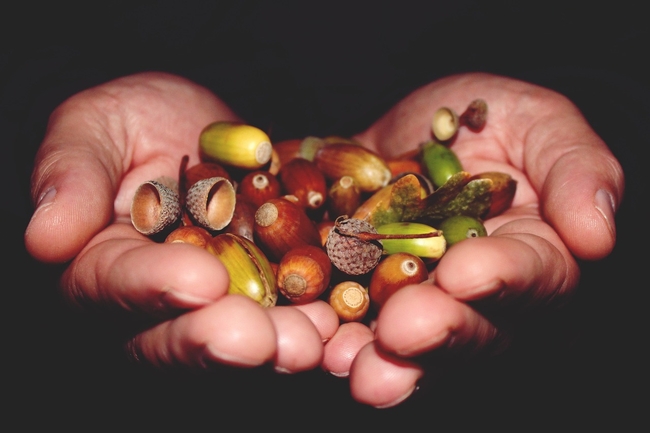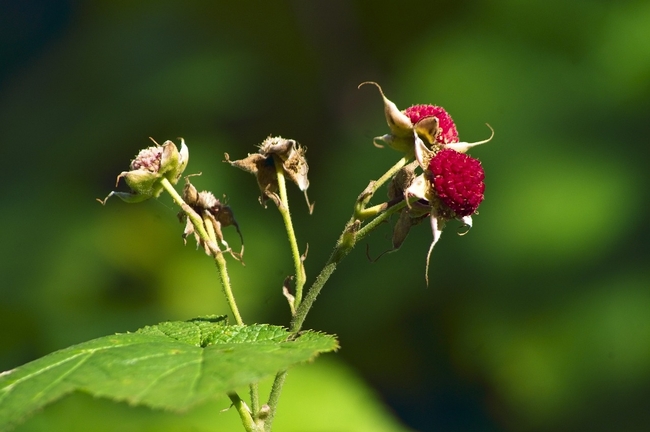Recently a fellow Master Gardener recommended I read Inherited Silence by Louise Dunlap. The book is described as “an insightful look at the historical damages early colonizers of America caused and how their descendants may recognize and heal the harm done to the earth and the native peoples.”
Normally, this description would not inspire me to read the book, but in this case the setting is Napa Valley, and the author is a descendant of the Coombs family, the founders of the City of Napa. The Coombsville area is named for them as is Napa's oldest law firm, Coombs & Dunlap.
This is not a “feel good” book by any stretch of the imagination. But if you can get past how the First People were enslaved and their land taken from them, and how the use of the land changed, then you'll find a compelling story about the Wappo people, what they ate and the role that California native plants played in their lives.
I found the story engaging enough to cause me to purchase another book on a related topic: Tending the Wild: Native American Knowledge and the Management of California's Natural Resources by M. Kat Anderson.
According to the Suscol Intertribal Council's website, native people lived in Talahalusi, "the cultivated paradise of the Napa Valley,” for 10,000 years. They maintained their traditions, passed down their stories and thrived.
The Napa Valley is one of California's longest inhabited areas. "It was a paradise, a cultivated paradise where one only had to reach out their hand to eat. A place rich in beauty, water, and food," states the oral history of Native American elder Jim Big Bear King. Acorns, perennial grasses, wild berries, freshwater shellfish, salmon, fowl, and game were their diet.
The First People of Napa did not grow food. The men hunted and fished, and the women foraged as there was sufficient wild food to satisfy their needs.
According to the website www.warpath2peacepipes.com, the Wappo ate mostly roasted or stone-boiled food. They had a meal at eight or nine in the morning and again at sundown. Acorn meal from ground acorns was a staple. The many species of oak trees on their lands yielded seven different types of acorns. The Wappo gathered the acorns, stored them for up to one year, ground them into meal and leached them of their tannin to make soup, cakes and bread. They hunted deer, elk, fowl, and small game such as rabbits and quail. Fish, particularly salmon, was another important food source.
The Wappo collected other foods including buckeye nuts, pepperwood nuts, various greens, roots, bulbs, and berries, including thimbleberry, elderberry, California wild grape and chokecherry. Most foods were dried and stored for use during the winter. Wappo living in coastal areas hunted sea mammals and considered dried seaweed a delicacy.
We no longer gather acorns for food, but employees of Napa County's Resource Conservation District do gather acorns in the fall to re-oak the valley. They collect, plant, and distribute acorns from local native oak trees in an effort to replace lost oaks.
Buckeye nuts are poisonous when raw, so the Wappo had to process them in much the same way that they processed acorns. Today, given our abundant food supply, the amount of work required to make buckeye nuts edible is probably not worth the result.
Thimbleberry is in the rose family and is widespread in California. The plant produces a tart edible fruit, which ripens to bright red in mid to late summer. The Wappo ate it raw, cooked or dried. Today, in addition to growing in the wild, thimbleberries are planted in bird and wildlife gardens and for erosion control.
Elderberries were crushed, strained, and boiled into a syrup for sweetening dishes or made into jam. They also had medicinal uses and many parts of the plants were used for crafts. The wood, stems, branches, and twigs were used for musical instruments and ceremonial purposes. The stems were hollowed out to make smoking pipes, flutes, blowgun darts and arrow shafts. They also were used to make bow drills for starting fires. Today, elderberries are still grown for food and medicine.
California wild grape is a culturally significant plant for native tribes in California. It is used for cooking, cordage, basket making and building. In areas where California wild grapes are abundant, the fruit is eaten raw.
Chokecherries were a staple food for many indigenous peoples and also used to treat a number of ailments. Berries were eaten raw or dried and mixed with pemmican. Fresh fruit was mashed and made into jelly and syrup or fermented into cherry wine. Even the roots and bark were consumed in the form of tea. Chokecherries can be invasive so plant them with caution.
Yellow mariposa lily bulbs were eaten raw or gathered in the fall and boiled like potatoes; the flower buds were eaten when young and fresh. Because the bulb is buried deep underground, the plant can survive most fires even when the above-ground portion is burned.
Few, if any, members of the Wappo tribe live in Napa today. If they did, they might still be hunter-gatherers to some extent as the plants that sustained their ancestors still exist in the wild today. They could certainly teach us something about food preserving and how to survive in the wilderness.
Gardening with the Masters: Join UC Master Gardeners of Napa County for this gardening workshop on Saturday, August 19, from 10 am to noon, at Ole Health South Campus, 300 Hartle Court, Napa. Children five and older are welcome if accompanied by an adult. Class size is limited. Register at: https://www.olehealth.org/our-services/community-outreach-resources
Workshop: Join UC Master Gardeners of Napa County for a workshop on “Welcoming California Native Plants into Your Garden” on Saturday, August 26, from 10 am to noon, at Las Flores Learning Garden, 4300 Linda Vista Avenue, Napa. Learn compelling reasons to include native plants in your garden, when and how to plant them, and how to care for them. Attendance is limited. Register here.
Help Desk: The Master Gardener Help Desk is available to answer your garden questions on Mondays and Fridays from 10 am until 1 pm at the University of California Cooperative Extension Office, 1710 Soscol Avenue, Suite 4, Napa. Or send your questions to mastergardeners@countyofnapa.org. Include your name, address, phone number and a brief description of the problem. For best results, attach a photo of the plant. You may also leave a voicemail message with the same information at 707-253-4143.

